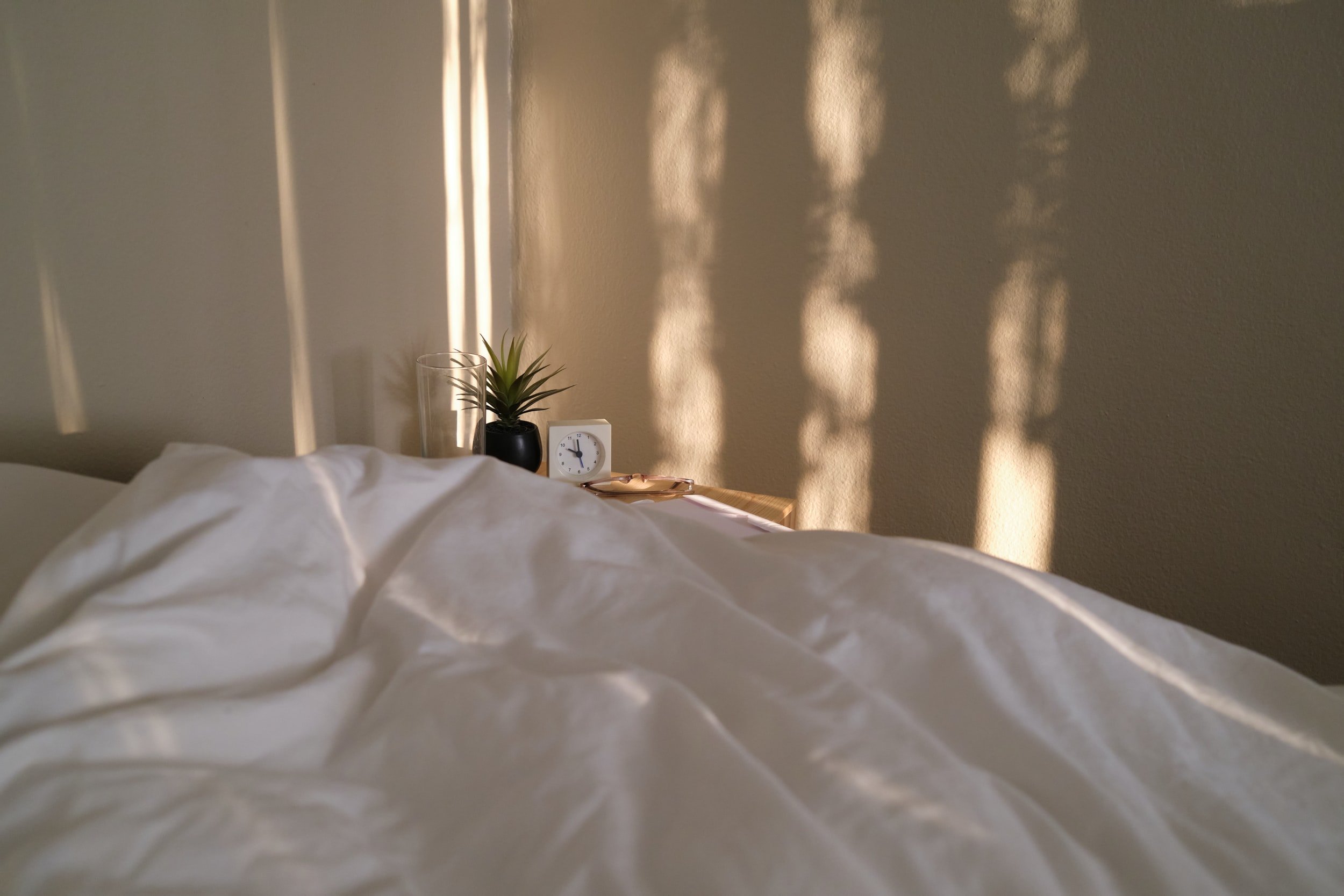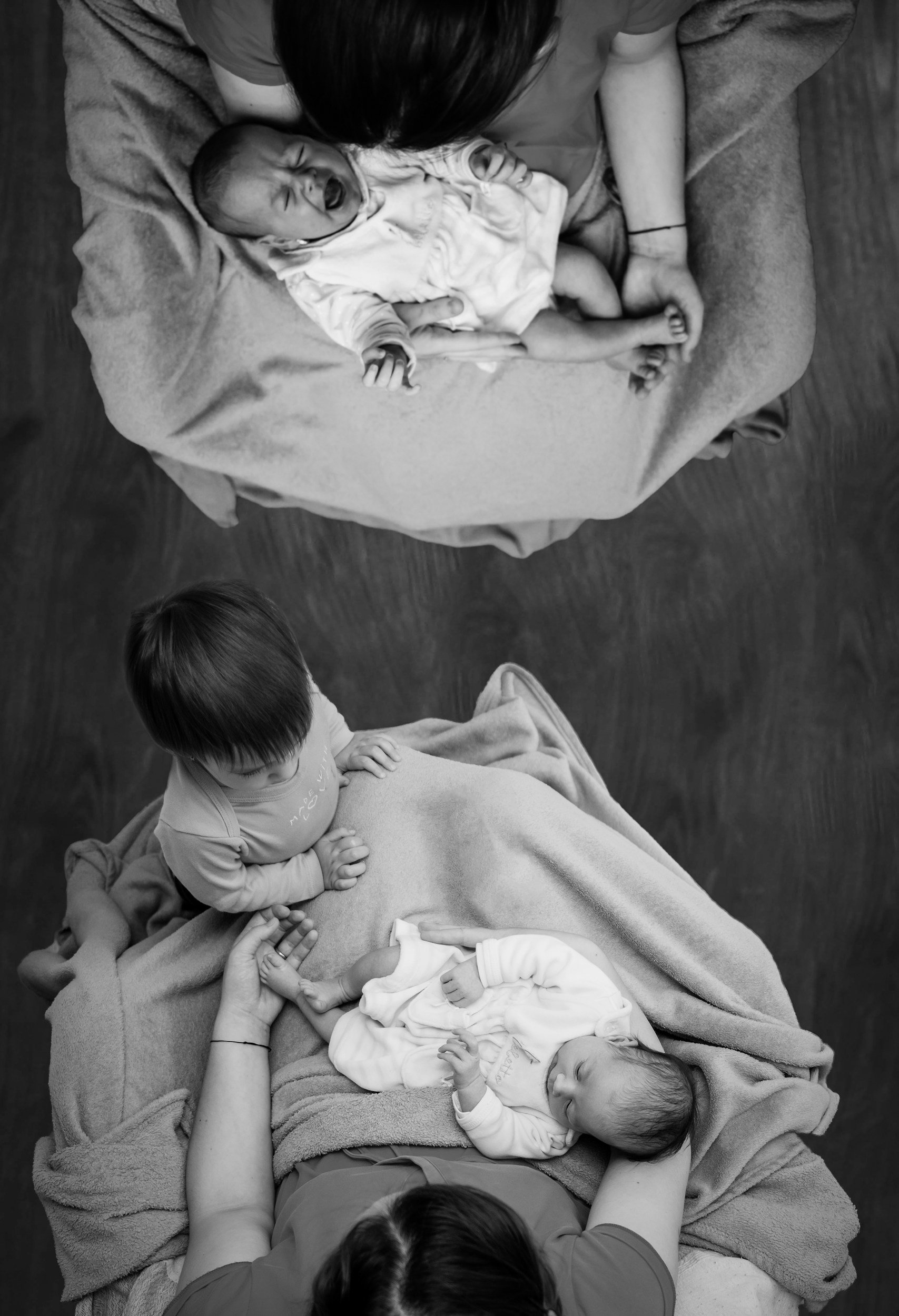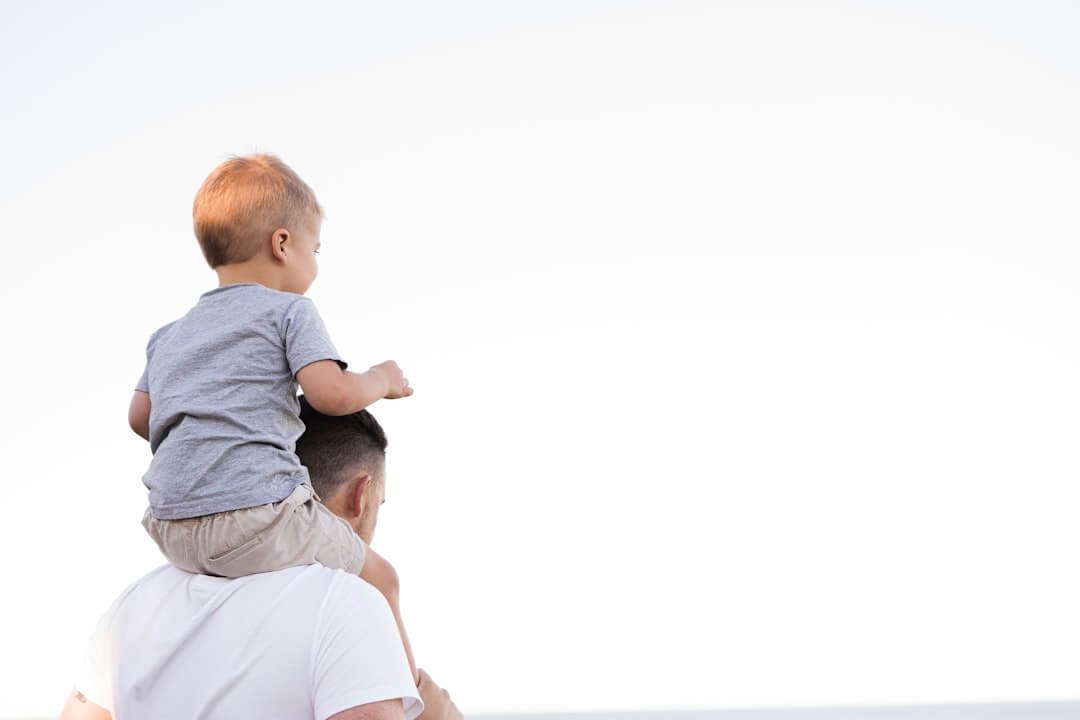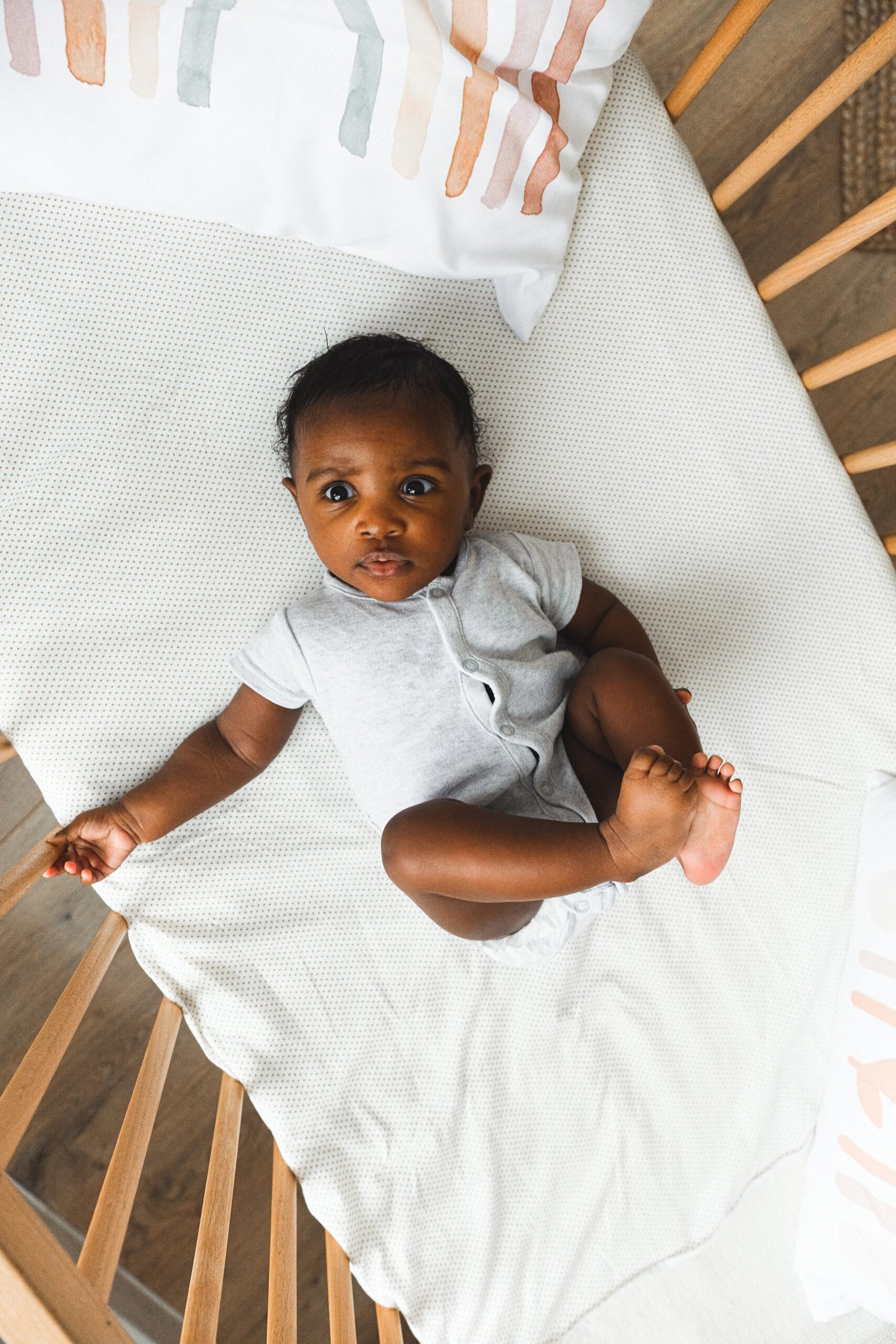I'm Rachael
Mom of 3 & Baby Sleep Expert with Big Sis Energy
& I’VE DONE ALL THE RESEARCH FOR YOU ALREADY.
Better sleep for the entire family
BROWSE COURSES
hey!
5 Simple Tweaks to Get Your Baby Sleeping Better
in this post:
-
tweak #1: follow wake windows as a guide (but not the bible)
-
tweak #3: create the ideal sleep environment & bring in positive associations
-
tweak #5: adequate nutrition leads to better sleep
Is your baby’s sleep a complete and utter mystery? Have you read all the books, blogs, and articles google has to offer, only to be *still* exhausted and confused? There is so much information out there about baby sleep, much of it contradictory. So how can a parent really know what to do to get their baby (and themselves) better sleep? These simple tweaks are things you can start implementing today, and will actually make a huge difference not only in how your baby sleeps, but how happy they are when they’re awake. Trust me- an overtired baby is a cranky baby and that makes for a pretty burnt-out parent.
Tweak #1: Follow Wake Windows as a Guide (but not the Bible)
I don’t know about you, but I had never heard the term “wake window” before having a baby who didn’t sleep. While babies vary on appropriate wake windows, they can be a great guide to prevent your baby from getting overtired. A wake window is simply the amount of time between sleeps. The first wake window of the day (between waking up in the morning and the first nap) tends to be the shortest. An average wake window for a newborn is between 45-60 minutes. For babies 2-4 months, the wake window is between 60-90 minutes. Wake windows increase every few weeks, though, so it’s important to also cue into your baby’s unique sleepy cues. Sleep needs are also SO variable from baby to baby. According to the National Sleep Foundation, a baby between the ages of 4-11 months could need as little as 10 hours per 24 hours or as much as 18 hours! This means 2 6-month old babies could have differing sleep totals of up to 8 hours. That is huge! This means while we want to use wake windows as a tool knowing that they are the average, they are by no means a substitute for tuning into your baby and learning their unique patterns and cues.
Tweak #2: Observe Your Baby’s Sleepy Cues
A baby’s sleepy cues are the things she does when she’s getting tired. Babies actually have early and late sleepy cues. Paired with wake windows, these cues can help tell you when the right time for a nap will be so you’re not fighting to put down an under or overtired baby. Sleepy cues that mean your baby is probably ready for a nap soon include appearing spaced out or disinterested in playing/ looking at you, decreased movement, head nuzzling into you, and slight reddening of the eyebrows. Late cues include things like ear pulling, fussiness, and arching of the back. Late cues mean “I need a nap right now!” so do whatever you can to get baby to sleep quickly like rocking, nursing, or taking a walk in the stroller. Every baby’s cues are slightly different, so spend a few days observing your baby to see if you can spot them.
Tweak #3: Create the Ideal Sleep Environment & Bring in Positive Associations
A baby’s sleep environment is the easiest thing you can change to set them up for sleep success. Even if they don’t have their own room, you can arrange the sleep space to be conducive to sleep. This means darkness with blinds or black-out curtains (use code heysleepybaby for 10% off), some white noise, and any distractions like mobiles away from the crib. The baby’s sleep space should be cool in temperature, as overheating can make it difficult to sleep and can be dangerous. In summer months you might consider placing a fan in the room for better air flow. Parts of baby’s environment, like white noise, will create strong sleep associations for them. Sleep associations are one of the best tools in my tool kit for getting babies to sleep. Think about how you go to sleep- do you have to brush your teeth first? Do you use a pillow? Maybe you put in ear plugs or have a certain fabric you like to sleep in? These are your sleep associations! Babies have them too- and the more the better. Nursing to sleep is one example of a sleep association. A lovey, pacifier, or comfort blanket baby is another great sleep association, though the official recommendation is to keep the crib clear of blankets or toys for the first year. For the baby’s sleep environment to make them ready for sleep, layer your sleep associations for your baby so they feel safe and secure. Your routine can also act as a great sleep association- like changing into a sleep sack, turning out the lights, rocking and singing a song.
Tweak #4: Provide Rich Opportunities for Sensory Activity
When your baby is awake, it’s important to stimulate their brains and nervous systems for lots of reasons. A baby’s brain is growing so fast! Access to experiences that will offer them opportunities to use their senses, and I don’t mean just the 5 senses of smell, touch, taste, hearing, and sight. There are 2 other senses we use which are the vestibular sense (movement and balance) and proprioception (sensation of your body in space). Some ideas for how to help baby access all of these senses include allowing them to touch and feel lots of different materials and textures, swinging, climbing, crawling, scooting, pushing/ pulling objects, rolling, bouncing, spinning, etc. (all based on baby’s age of course). Even newborns can start using all of these senses by having plenty of time on their bellies and sides on the floor (while supervised) looking at a toy, book or mirror. These rich sensory experiences wear your baby out! They will be ready for sleep if they’ve been appropriately (but not overly) stimulated during their wake time.
Tweak #5: Adequate Nutrition Leads to Better Sleep
If your baby has started on solids, food is an amazing way to help support their sleep. There are so many foods rich in vitamins and nutrients that actually promote better sleep. One of the most important minerals for adequate sleep is Iron. Iron deficiency is the single most common nutrient deficiency in the world and studies suggest that babies who are deficient may have long-lasting alterations in the organization of their sleep patterns. Making sure your baby is getting enough iron (the best sources are heme iron from animal products) could make a difference in how they are sleeping. High-iron foods include beef, lentils, spinach, eggs, turkey, chicken, and quinoa. Gut health is also an important factor in good sleep. It’s critical that you rule out any food sensitivities or allergies with your doctor if your baby has chronic interrupted sleep and you sense any discomfort, gassiness, fussiness, or constipation. To promote good gut health, you can incorporate a probiotic per your doctor’s recommendation. Probiotics come in all forms, but the easiest to give a baby are the ones that come in powder form and can be mixed into smoothies or other tasty foods.
Incorporating these five tweaks into your routine can make a huge impact on baby’s sleep. Most sleep issues parents come to me with can be traced back to one or more of these things not being implemented. When it comes to sleep, or any part of parenting, once you know better you can do better. These kids don’t come with a manual- and you don’t need one! Follow your parental instincts and tune into your baby- they’ll never steer you wrong!
If you’re looking for all the information you’ll need from the newborn stage through toddlerhood, check out the Newborn Masterclass which is the Essential Baby Sleep Course for New + Expecting Parents OR grab the Baby Bundle to set yourself up for the newborn phase. With this option you’ll get all the great stuff in the Newborn Masterclass PLUS The Ultimate Crib & Bed Guide.
Featured
When daylight saving time ends, we “fall back” one hour, meaning that sunrise and sunset will occur an hour earlier. How will this affect your baby’s sleep?
Responsive sleep tips and support for parents of multiples or twins.
What are floor beds? When to use them? And How to use them?
Sources:
Peirano, P. D., Algarín, C. R., Chamorro, R. A., Reyes, S. C., Durán, S. A., Garrido, M. I., & Lozoff, B. (2010). Sleep alterations and iron deficiency anemia in infancy. Sleep medicine, 11(7), 637–642. https://doi.org/10.1016/j.sleep.2010.03.014
Peirano, P. D., Algarín, C. R., Garrido, M. I., & Lozoff, B. (2007). Iron deficiency anemia in infancy is associated with altered temporal organization of sleep states in childhood. Pediatric research, 62(6), 715–719. https://doi.org/10.1203/PDR.0b013e3181586aef
binge reads
We think you'll love these
You deserve to the
baby stage, not just "survive it."
And you DON'T have to sacrifice your values, ignore your instincts, or force yourself to follow a method you don't align with just to get your baby back to sleep.
I’m here to help you create a restful, sustainable sleep environment that honors both your baby’s needs AND your own (without the stress OR the guilt!) because, no, you don’t have to choose between the two.
enjoy!
BABY SLEEP COURSES →
BABY SLEEP CONSULTS →
Wish you could help your baby sleep better without resorting to sleep training? Download my FREE guide to a good night’s sleep and learn 8 simple, science-backed tips for supporting your child’s needs.
Traditional sleep training methods don’t have to be your solution to better sleep.
SLEEP TRAINING ISN’T THE ONLY WAY TO GET GOOD SLEEP
Hey, I'm Rachael and Hey, Sleepy Baby is for parents who want to get their nights back, without sleep training their babies.
NO ONE TOLD US POD
explorING the untold truths of parenting





